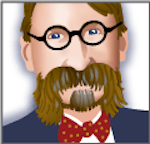PATUXENT RIVER NAS, Md. - U.S. Navy airborne warfare experts are moving forward with a plan to upgrade the EA-18G Growler electronic warfare (EW) aircraft with new state-of-the-art electronic jammers to suppress and inject computer viruses into enemy digital radar and communications systems.
Officials of the Naval Air Systems Command at Patuxent River Naval Air Station, Md., announced a $1 billion contract to Raytheon Co. to build and test 15 Next Generation Jammer (NGJ) aircraft-mounted pods in support of NGJ full-scale development. The NGJ is a tactical electronic jammer pod that replaces the 40-plus-year ALQ-99 jammer system on the EA-18G, a version of the Navy's carrier-based two-seat F/A-18F Super Hornet jet fighter-bomber that is modified specially for electronic warfare.
The EA-18G leads an airborne attack by disrupting enemy radar, communications, and computer networks with jamming signals and computer viruses. The aircraft also can destroy enemy radar installations with its AGM-88 High-speed Anti-Radiation Missiles (HARM).
The contract to the Raytheon Space and Airborne Systems segment in El Segundo, Calif., calls for 14 NGJ aero-mechanical test pods to verify aircraft flying qualities and pod safe separation from the host aircraft; equipment for system integration laboratories; and mature manufacturing processes.
Raytheon's NGJ will integrate advanced electronic attack technology, such as high-powered, agile beam- jamming techniques and solid-state electronics to deny, degrade, and disrupt enemy threats while protecting U.S. and coalition forces. Raytheon's NGJ will provide airborne electronic attack and jamming capabilities, and will include cyber-attack capabilities using the aircraft's active electronically scanned array radar to insert tailored data streams into enemy radar and communications systems.
Raytheon will use its gallium nitride (GaN)-based AESA technologies and an open-systems architecture for the NGJ design. Raytheon will do the work in El Segundo, Calif.; Forrest, Miss.; Dallas.; McKinney, Texas.; Torrance, Calif.; Fort Wayne, Ind.; Marion, Va.; San Diego; Andover, Mass.; and Tucson, Ariz., and should be finished by December 2020.
FOR MORE INFORMATION contact Raytheon at www.raytheon.com.





